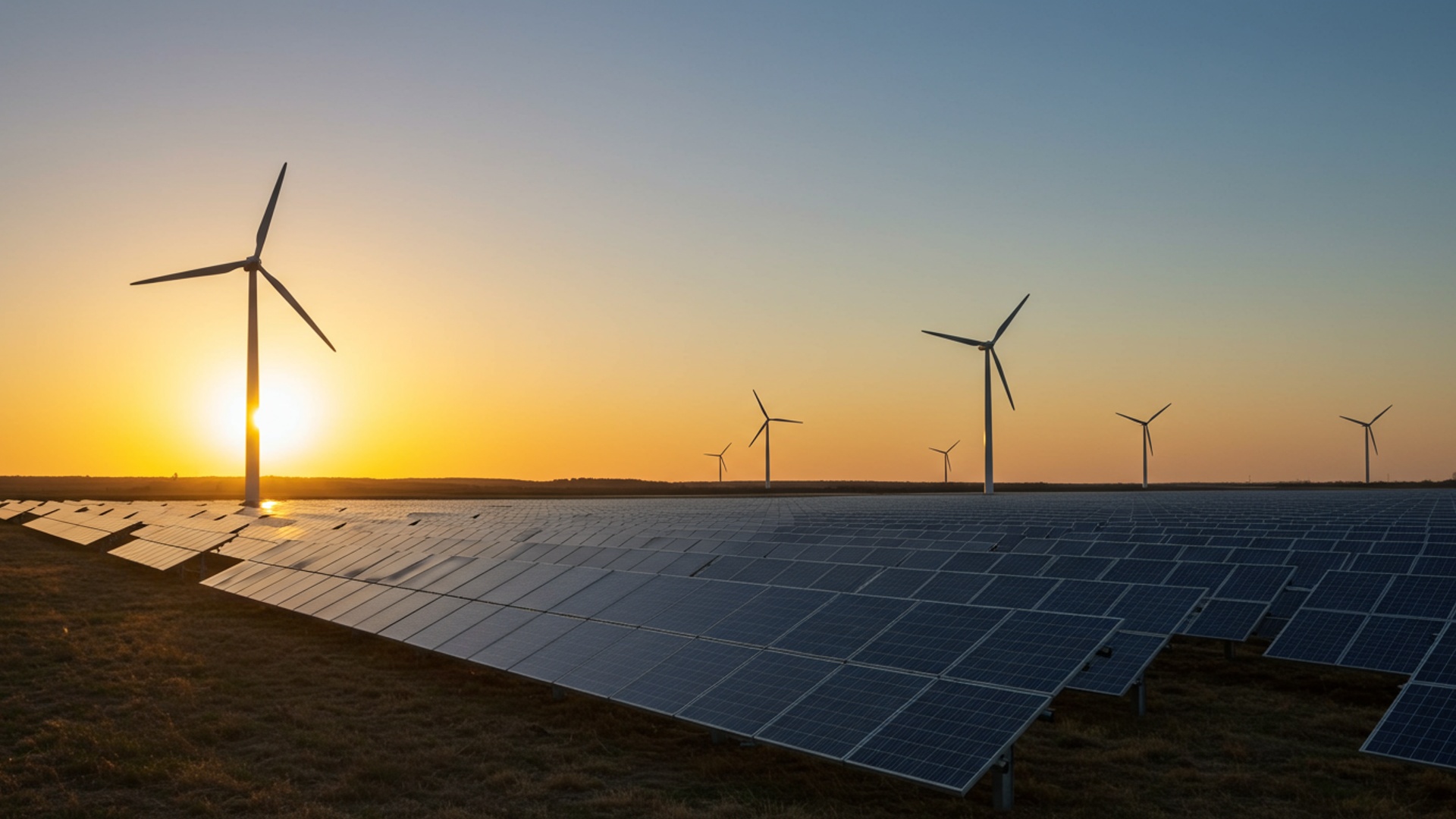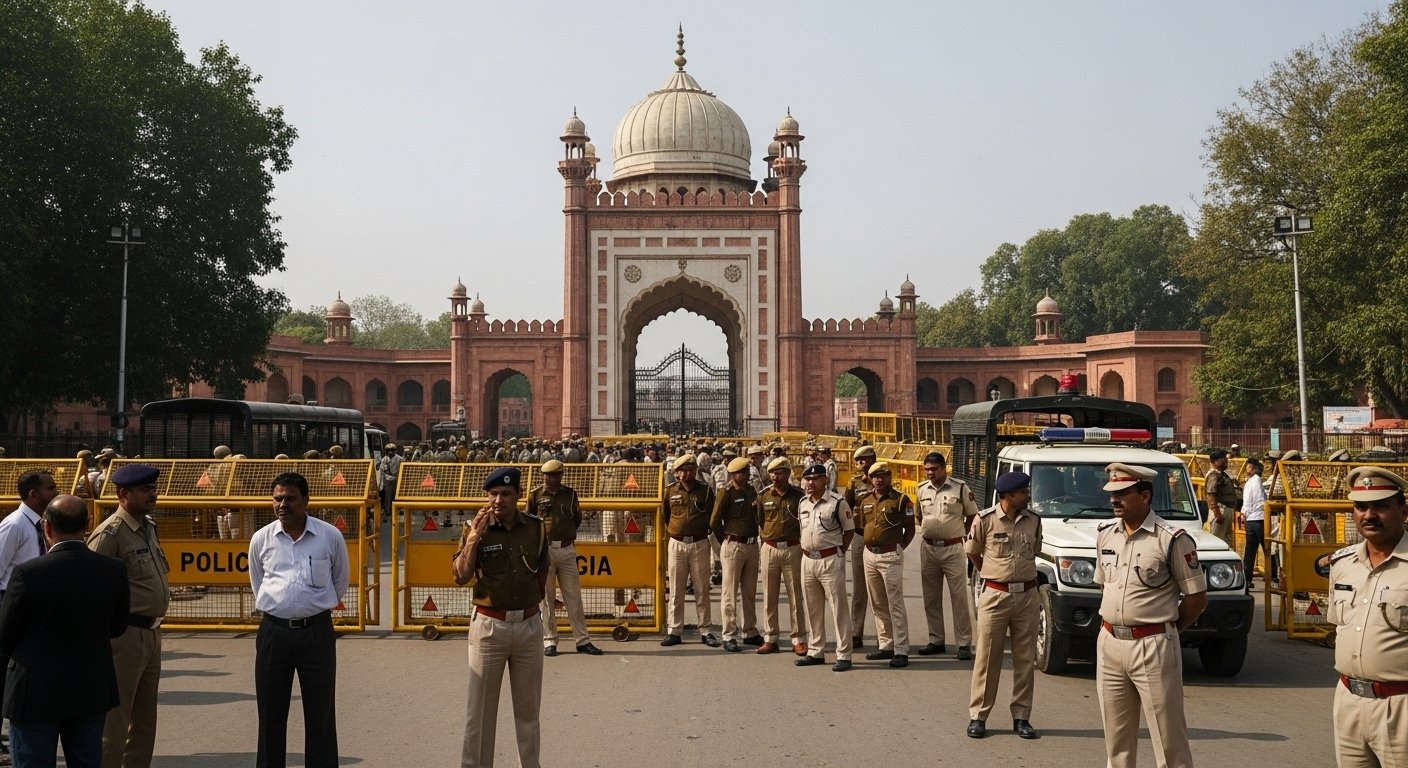Rajasthan is quickly changing its energy picture, with a huge wave of money now flowing into the state. This big investment is making the desert region a major center for clean, endless power. New projects, mainly for sun and wind energy, are getting billions of dollars, promising to create many new jobs and greatly improve the local economy. This rapid growth in green power puts Rajasthan at the front of India’s move away from old energy sources and sets it up as a global example for future clean energy. The state is now a key part of the country’s plan for a greener future.
Big Change in Energy Production
Rajasthan, a state known for its vast desert areas, has made big progress in producing green energy. It has become a top state in India for making power from renewable sources. This is because of strong support from the government and large amounts of money being put into new energy projects. The state is now a leader in solar power generation and is working to increase its wind energy output. In early 2024, Rajasthan already had more than 18,000 megawatts (MW) of solar power capacity, making it the best state in India for solar energy. By May 2024, the state’s total renewable energy capacity reached about 27,937 MW, with solar power making up more than 29,000 MW and wind power about 5,000 MW. More recently, in June 2025, Rajasthan moved back to the top spot among Indian states in renewable energy, having a total capacity of 37,818 MW, which includes solar and wind projects. As of December 2024, about 70 percent of all the electricity-producing machines in Rajasthan used renewable sources, adding up to around 30,500 MW. This big change shows Rajasthan’s move towards a clean energy future. The state’s large areas of unused land, high amount of sunlight. strong winds make it a very good place for setting up solar and wind projects.
Money Coming In for Green Energy
Rajasthan has seen a huge amount of money pledged for its green energy sector. During the Rising Rajasthan Global Investment Summit in 2024, agreements were signed for investments worth a stunning 37 lakh crore rupees. Renewable energy projects made up almost 60 percent of these promised investments. More than 800 agreements related to clean energy were signed, which could bring in 28 lakh crore rupees in investments. These investments are expected to create over 1. 2 million jobs, with 300,000 of them being direct jobs. In November 2024, the state government signed agreements worth 6. 57 lakh crore rupees with different investors in the energy field. One of the big steps taken recently was the state Chief Minister giving approval to give out 4,780 hectares of land. This land will be used to build four new solar projects that will produce a total of 2,950 MW of power. This includes three solar parks in the Bikaner area that will make 2,450 MW of power. a 500 MW solar project for NTPC Renewable Energy Ltd in the Phalodi area. These projects are expected to bring in about 10,000 crore rupees in investments and will get government grants for 33 percent of their cost. In a different project, Coal India Limited and Rajasthan Vidyut Utpadan Nigam are working together to build a solar park in Bikaner’s Poogal area. This project will cost 5,400 crore rupees and will produce 1,190 MW of solar power. Also, ReNew, a major Indian renewable energy company, opened a very large solar project in Jaisalmer in April 2025. This project has a capacity of 1,300 MW and covers about 3,500 acres of land. It is expected to make about 2,490 million units of electricity every year, which is enough to power around 5 lakh homes in Rajasthan. ReNew has already invested more than 21,000 crore rupees in Rajasthan and has about 5,000 MW of projects working there. The central government has also approved a 2,000 MW solar park project in Rajasthan, offering 30 percent financial help. These large projects show the strong belief of investors in Rajasthan’s ability to produce green energy.
Helpful Rules and Plans
Rajasthan’s quick growth in renewable energy is largely due to its supportive government rules and plans. The state has put in place crucial rules like the Rajasthan Renewable Energy Policy, 2023. the Integrated Clean Energy Policy, 2024. These rules offer many benefits to companies that want to invest in renewable energy. For example, they remove charges for sending and distributing renewable energy, remove certain extra fees. lower the electricity tax on solar energy from 60 paise to 40 paise per unit. Also, land used for renewable energy projects gets a 100 percent tax break for seven years. The Rajasthan Investment Promotion Scheme (RIPS) 2024 is another key plan. It gives money help to investors, including capital subsidies of up to 28 percent. It also offers incentives based on sales, which can be between 1. 20 percent and 2. 0 percent of net sales over 10 years, or a tax refund of up to 75 percent of the state tax paid for seven years. The state also makes it easier to get land by offering competitive rates. it has built large solar parks like the Bhadla Solar Park, which can produce 2,245 MW of power. To help connect these new power sources, a “Green Energy Corridor” is being built in western Rajasthan to link solar and wind power production. The state also encourages smaller solar projects, allowing decentralized solar power plants from 0. 5 MW to 5 MW and promoting rooftop solar systems. They have made it easier for farmers to use their barren land for power generation under the PM-KUSUM Scheme. The state’s latest plan, the Integrated Clean Energy Policy 2024, has a very big goal: to reach 125,000 MW of renewable energy capacity by the financial year 2030. This includes 90,000 MW from solar, 25,000 MW from wind and hybrid sources. 10,000 MW from hydro, pumped storage. battery energy storage systems. This goal shows Rajasthan’s commitment to making a big impact on India’s national target of 500,000 MW of renewable energy by 2030. Rajasthan is also planning to produce 2,000 kilotons of green hydrogen each year by 2030.
“Rajasthan stands at the forefront of India’s renewable energy revolution,” said Union Minister for New and Renewable Energy, Shri Pralhad Joshi, at the Rising Rajasthan Summit in December 2024. “With bold targets, forward-thinking policies. recent investments, Rajasthan is most definitely on the path to becoming a renewable energy powerhouse.”
Making Energy and Jobs
The shift to renewable energy in Rajasthan is bringing many good things, like new jobs and cleaner air. The large investments are expected to create over 1. 2 million jobs, showing a big boost to the state’s economy. These projects also help the environment by reducing carbon pollution. For example, the 1,300 MW solar project in Jaisalmer alone is expected to stop about 2. 3 million tons of carbon dioxide from being released into the air each year. Rajasthan aims to become self-sufficient in power and even sell electricity to other states. This move is essential for India’s overall energy security and will help the country reach its goal of having 500,000 MW of non-fossil fuel capacity by 2030. By producing its own energy from clean sources, Rajasthan will reduce its reliance on coal, which is often expensive to transport from other parts of the country.
Things to Overcome
Despite the rapid growth, Rajasthan still faces some challenges in its renewable energy journey. Even though the state produces a lot of green energy, only about 16 percent of its daily electricity use comes from renewable sources. A large part of the clean power created is sent to other states, while local power companies still depend heavily on coal-based power, which leads to financial difficulties for them. One challenge is the rising cost of buying land for new projects, which has gone up by 8 to 10 percent because of new stamp duty rules. Also, there are not enough power substations. existing ones are often full, which slows down the setup of new solar projects that allow open access to the grid. Some state rules also limit certain types of projects, like group captive projects, which adds to the difficulty for developers. Adding a lot of solar power to the electricity grid also brings challenges because solar power generation changes depending on the weather and time of day. To keep the grid stable, Rajasthan needs to develop better ways to predict solar power output, upgrade its power lines and other infrastructure. use smart grid technologies and energy storage systems. There is also a need to increase wind power capacity to create a better mix with solar power, which helps make the grid more stable. Overcoming these issues will be key for Rajasthan to reach its full potential in renewable energy and ensure a steady power supply for its own people. ![]()











